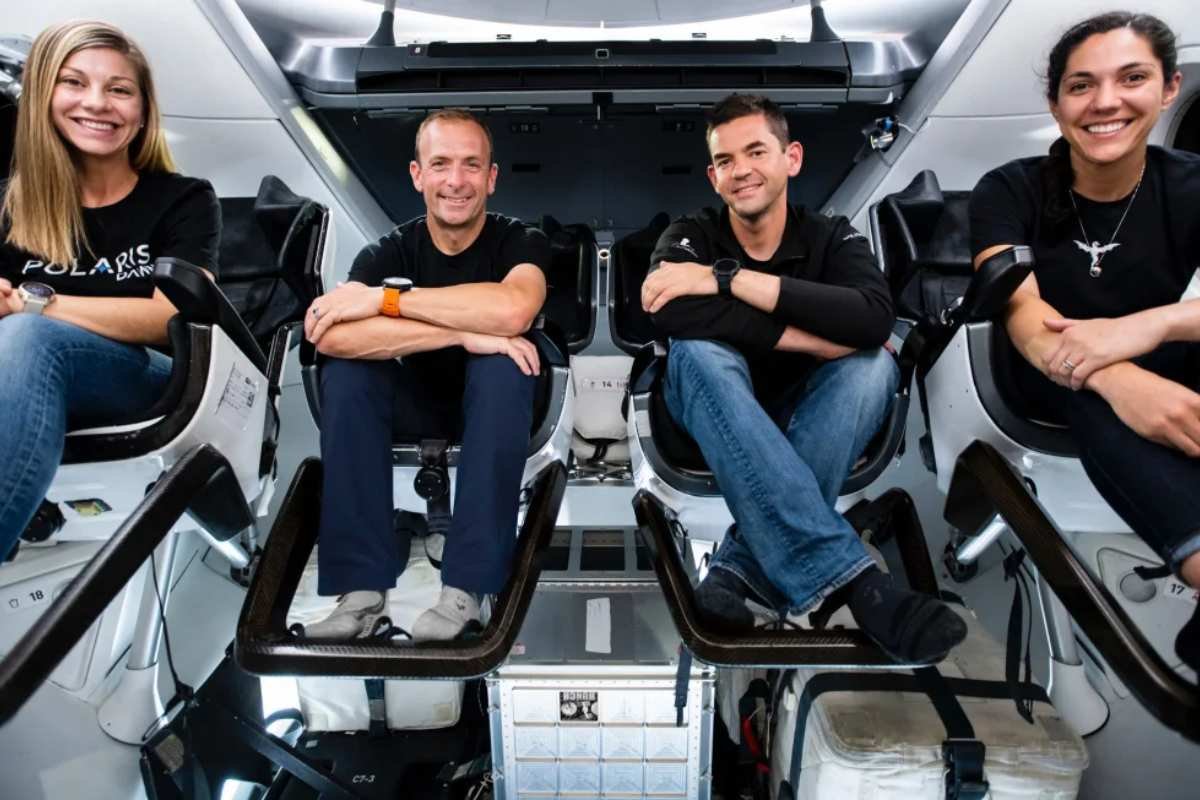Source – edition.cnn.com
A team of four civilians on board SpaceX’s Polaris Dawn mission is on the verge of making history by becoming the first group of non-government astronauts to perform a spacewalk. The mission, which has already broken records for traveling farther into space than any human since NASA’s Apollo program, is set to achieve another significant milestone. SpaceX is broadcasting the event live, with the spacewalk, known as an extravehicular activity (EVA), scheduled to start at 5:58 a.m. ET.
The spacewalk will take place during Polaris Dawn’s five-day journey through Earth’s orbit, marking a high-risk moment for the crew as they venture outside their spacecraft. The entire SpaceX Crew Dragon capsule will be depressurized and exposed to the vacuum of space during the EVA, presenting a challenge as the crew navigates the extreme conditions.
The Polaris Dawn crew includes Shift4 Payments CEO Jared Isaacman, who funded the mission; Scott “Kidd” Poteet, a former U.S. Air Force pilot; and SpaceX engineers Anna Menon and Sarah Gillis. Since their launch on Tuesday, the crew has been preparing for the spacewalk, including undergoing a “pre-breathe” process to avoid dangerous nitrogen bubbles in their blood while exposed to the vacuum.
The Dangers and Complexity of the Spacewalk
The Polaris Dawn crew is scheduled to conduct the spacewalk at altitudes ranging between 190 and 700 kilometers (118 to 435 miles) above Earth. Although the Crew Dragon capsule will be exposed to space for around two hours, only Jared Isaacman and Sarah Gillis will actually leave the spacecraft, for approximately 20 minutes. The two astronauts will exit through a hatch at the top of the capsule and use a mobility aid, nicknamed “skywalker,” to escape into the space’s void.
Isaacman emphasized the importance of ensuring the spacecraft can be safely repressurized after the EVA. If depressurization fails, the Polaris Dawn crew would have only their oxygen reserves to rely on, giving them a two-hour window to return to Earth. “I don’t expect we’ll have too much sight-seeing time,” Isaacman told CNN. The focus of the spacewalk will be on testing SpaceX’s newly developed EVA suits in space conditions. These suits, unlike traditional spacesuits used by government astronauts, do not have a Primary Life Support System (PLSS) and will rely on life support through long hoses connected to the spacecraft.
SpaceX’s EVA Suits and the Vision for Space Settlement
SpaceX’s EVA suits are a groundbreaking innovation that was designed in just two and a half years specifically for this mission. The suits, which operate as personal spacecraft for the astronauts, differ from the bulky white suits used on spacewalks from the International Space Station. Instead of the PLSS that allows free movement during complex tasks outside the space station, the Polaris Dawn crew’s EVA suits are tethered to the spacecraft for life support.
This design is part of a broader vision for future space missions. SpaceX hopes to create spacesuits that can be mass-produced for future space settlements, rather than the custom-made and expensive suits used by space agencies today. In a discussion with SpaceX CEO Elon Musk, Isaacman highlighted the goal of developing affordable spacesuits, envisioning a future where tens of thousands are required for permanent human habitation in space. “We need space suits,” Isaacman stated, “and they shouldn’t cost hundreds of millions of dollars.”
With the Polaris Dawn mission paving the way for civilian space exploration, the spacewalk represents not only a historic first but also a step toward the long-term vision of living and working in space on a large scale.









